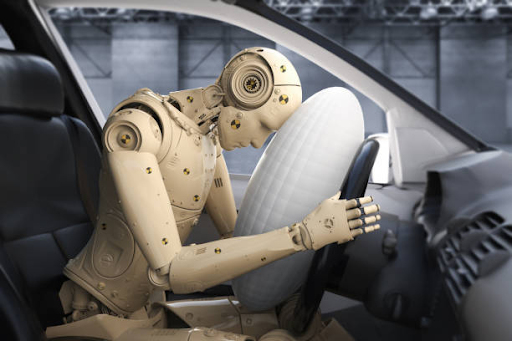Fastening your seatbelt is the most crucial thing you can do to safeguard your life. Safety belts are a stand-alone lifesaver even without important car safety features like automatic last-minute braking and forward-collision warning. When contrasting various models, don’t forget to consider safety features and popular car accessories.
It took a pandemic to teach people that life is more important than anything else, not even money. With everyone’s continued efforts, COVID-19 will gradually decline. However, compared to this virus, traffic accidents have claimed much more lives in India due to demographics. Therefore, you must ensure your car purchases are secure and have car-smart accessories.
Here is a list of some important car safety features.
- Airbags
Since 1998, front airbags have been a requirement for all new vehicles, and since 1999, for light trucks. Even before that, the majority of vehicles had them. When a frontal collision occurs, crash sensors linked to an onboard computer identify it and activate the airbags. The bags quickly expand—in the blink of an eye—before beginning to deflate.
Even though airbags have saved countless lives, they can potentially harm or kill youngsters or passengers not wearing seatbelts. You should never fit rear-facing child seats in front seats with airbags, and children under 12 should always ride in the back in the proper restraint system.
- ABS (Antilock Brakes)
Before the invention of antilock brakes, it was too simple to lock up the wheels during strong braking, preventing them from turning. It is impossible to control when the front tyres slide, especially on slick terrain. To avoid lock-up, ABS uses sensors at each wheel and a computer to maximise braking force at each wheel.
ABS enables the driver to maintain steering control while braking, allowing for the potential to steer the vehicle around an impediment. Unfamiliar with ABS operation, some drivers may become concerned by the pulsing sensation sent through the brake pedal and chattering at the wheels.
Do not fret. To optimise power and control, this system instantly applies the brakes. The secret is to provide heavy pedal pressure while letting the mechanism operate.
- Control Of Traction
This electronically regulated system restricts wheel spin to give the drive wheels the most grip possible during acceleration. It is beneficial when starting in icy or rainy weather or using a high-horsepower engine. While some traction-control systems work at all speeds, others only at low rates.
Most traction-control systems temporarily stop a spinning wheel by activating the vehicle’s antilock brakes. As a result, the opposing driving wheel receives power. Specific techniques may upshift the gearbox to avoid wheel spin and throttle the engine back.
- Digital Stability Control
Electronic stability control (ESC) enhances traction control. This technology aids in maintaining the car’s intended course while turning to prevent sliding or skidding. It uses a computer connected to several sensors that measure yaw (rotation), sideways motion, steering angle, and wheel speed.
The stability-control system temporarily brakes one or more wheels and, depending on the system, decreases engine power to help the vehicle return to the driver’s intended direction if it begins to veer off course.
ESC is beneficial for tall, top-heavy vehicles like pickup trucks and sport utility vehicles since it can assist in preventing rollover accidents.
With the 2012 model year, electronic stability control became required for all vehicles. It first appeared on high-end cars years ago, then spread to various types of vehicles. On SUVs, it became very typical.
Automakers’ stability control systems typically follow one of the proprietary names listed below. Find out before you buy if there is any doubt about whether a used automobile has it. While a model might have had ESC before 2012, not all trims or specific vehicles had it.
- Safety Belt Attributes
Despite being undoubtedly the most important car safety features, seatbelts may function more efficiently thanks to improved features.
Seatbelt Pretensioners instantly retract the belts to pick up the slack in the event of a frontal collision. Furthermore, it assists in placing passengers so they can take full advantage of airbag deployment. The force of the shoulder belt on the occupant’s chest is controlled by pretensioners and force limiters working simultaneously. In order to release some of the pressure created by the pre-tensioners, force limiters enable the belt to play back slightly.
Inflatable safety belts are available in some models’ rear seats, which further lessen the impact of the belts’ force on passengers there in the event of an accident and distribute it over a larger area. This is especially important for more delicate passengers like children or older people.
Shoulder belt upper anchors that are adjustable can significantly improve safety. Adjustable anchors help position the belt over the chest rather than the neck to reduce the risk of neck injuries. Additionally, they can prevent the strap from dragging down on a tall person’s shoulder, enhancing comfort and promoting use.
Summary
While we’re on important car safety features, Carorbis wants you to know about the importance of auto insurance. Check out Carorbis’s advice on car insurance.

